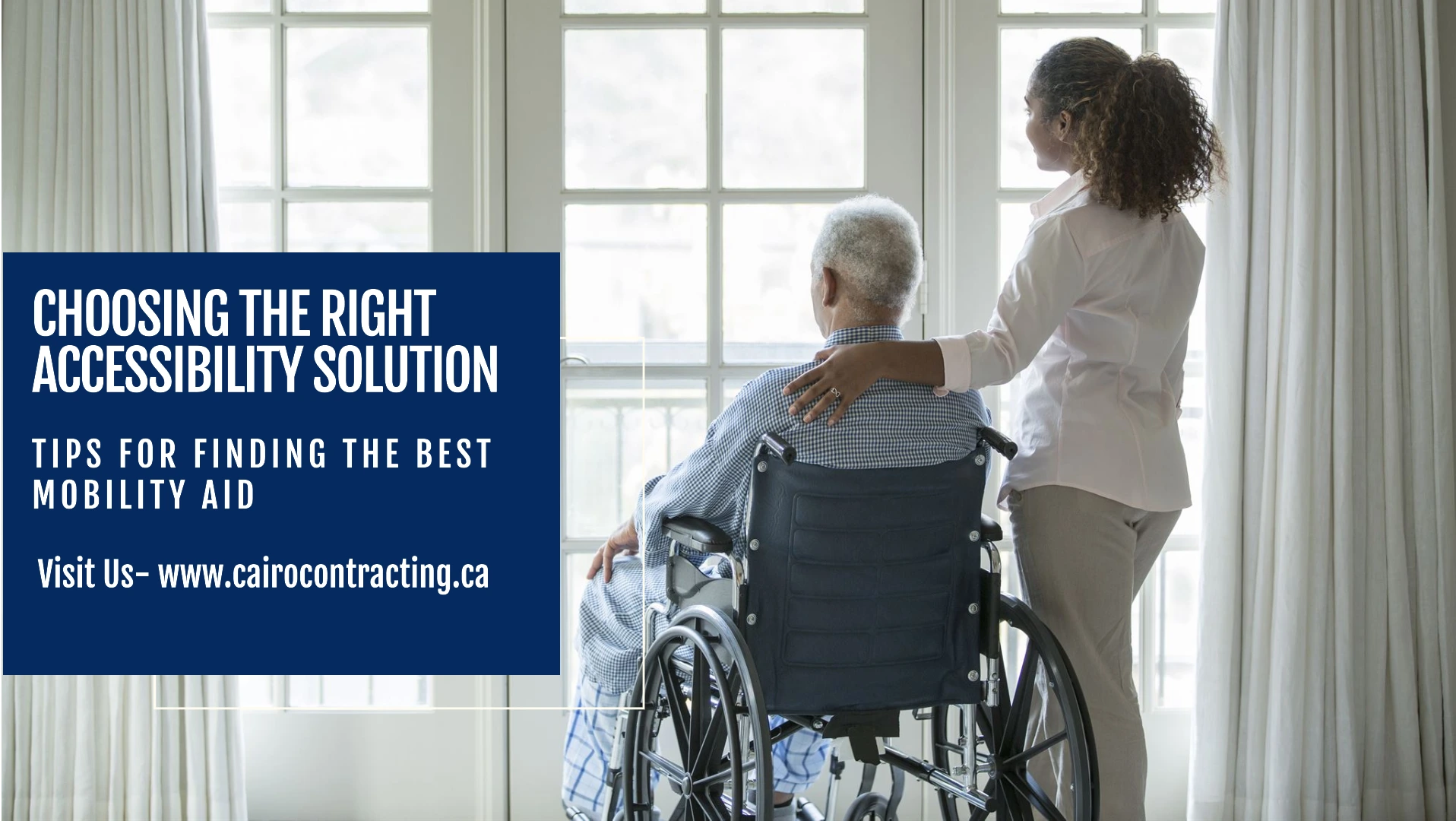Choosing the best accessibility solution for mobility depends on a few key factors, such as the level of mobility impairment, the type of tasks you want to make easier, and your personal preferences. Here are some steps to help guide your decision:

1. Assess Your Needs and Limitations
- Level of mobility impairment: Are you dealing with partial mobility issues or significant challenges? Understanding whether you need assistance with standing, walking, or getting in and out of a chair can help identify the right tools.
- Range of mobility: Consider whether you need solutions for short distances (like around your home), or for longer outings (like in public spaces or during travel).
- Physical environment: Take a look at where you’ll be using the mobility aids most (home, work, public spaces). Are there stairs, narrow doorways, or rough terrain that need to be considered?
2. Identify Potential Solutions
There are a variety of mobility solutions depending on the level of support needed:
- Wheelchairs (manual and power): If you’re unable to walk or need assistance with longer distances, a wheelchair might be necessary. A manual wheelchair requires the user to push themselves, while a power wheelchair is motorized and can be controlled with a joystick.
- Mobility scooters: If you’re able to walk short distances but need help with longer ones, a mobility scooter can provide a solution for outdoor travel. They are especially helpful for people with limited stamina or strength.
- Walkers and rollators: If you have partial mobility but need support for balance and stability, a walker or rollator can be a good option. Rollators have wheels, making them easier to maneuver, while walkers typically have stationary legs.
- Canes and crutches: For people who need just a bit of support while walking, a cane or crutch can help redistribute weight and reduce strain on a single leg or hip.
- Lift chairs: For individuals with difficulty standing up from a sitting position, lift chairs can assist by tilting and lifting the chair to an almost standing position.
3. Consider Key Features
- Comfort and fit: Look for solutions that fit your body type and personal comfort. Adjustable seats, armrests, or backrests can provide added support.
- Portability: Depending on your lifestyle, you might want solutions that are lightweight and easy to transport (e.g., foldable wheelchairs or scooters).
- Maneuverability: Consider how easy it is to navigate different environments, such as tight spaces, outdoors, or uneven surfaces.
- Durability: High-quality materials are essential for long-term use, especially if you plan to use the mobility aid frequently or for extended periods.
- Assistive technology: Some modern mobility solutions come with additional tech features, such as power-assisted wheels for wheelchairs, or apps to track scooter performance.
4. Consult with a Healthcare Professional
- Physical therapist: A physical therapist or mobility specialist can provide insight into which solution would best suit your needs. They can evaluate your strength, range of motion, and specific challenges.
- Occupational therapist: If you need assistance with day-to-day tasks and activities, an occupational therapist can help identify devices that will make those tasks easier, such as grab bars or ramps in the home.
5. Test Before You Commit
- Trial periods: Many companies or healthcare providers offer trial periods for mobility aids. Take advantage of this to see how well a particular solution works for your daily life.
- Demo: If possible, try out different devices at a store or medical facility where you can get a feel for them in real-life scenarios.
6. Evaluate Cost and Insurance
- Budget: Consider the upfront cost and maintenance of the mobility solution. Some devices can be pricey, but insurance may help cover some or all of the cost, especially if they are deemed medically necessary.
- Financing options: If the cost is a concern, inquire about financing plans or look for programs that provide subsidies for individuals with disabilities.
By going through these steps, you can better determine which mobility solution fits your lifestyle, needs, and preferences. It’s often a combination of features, comfort, and functionality that makes a solution the “best” one for you. You can reach out to Cairo Contracting to assist you with all the available options and recommend the best ones that fits your requirements.
Do any of these solutions stand out to you, or do you have specific needs you’re still weighing?